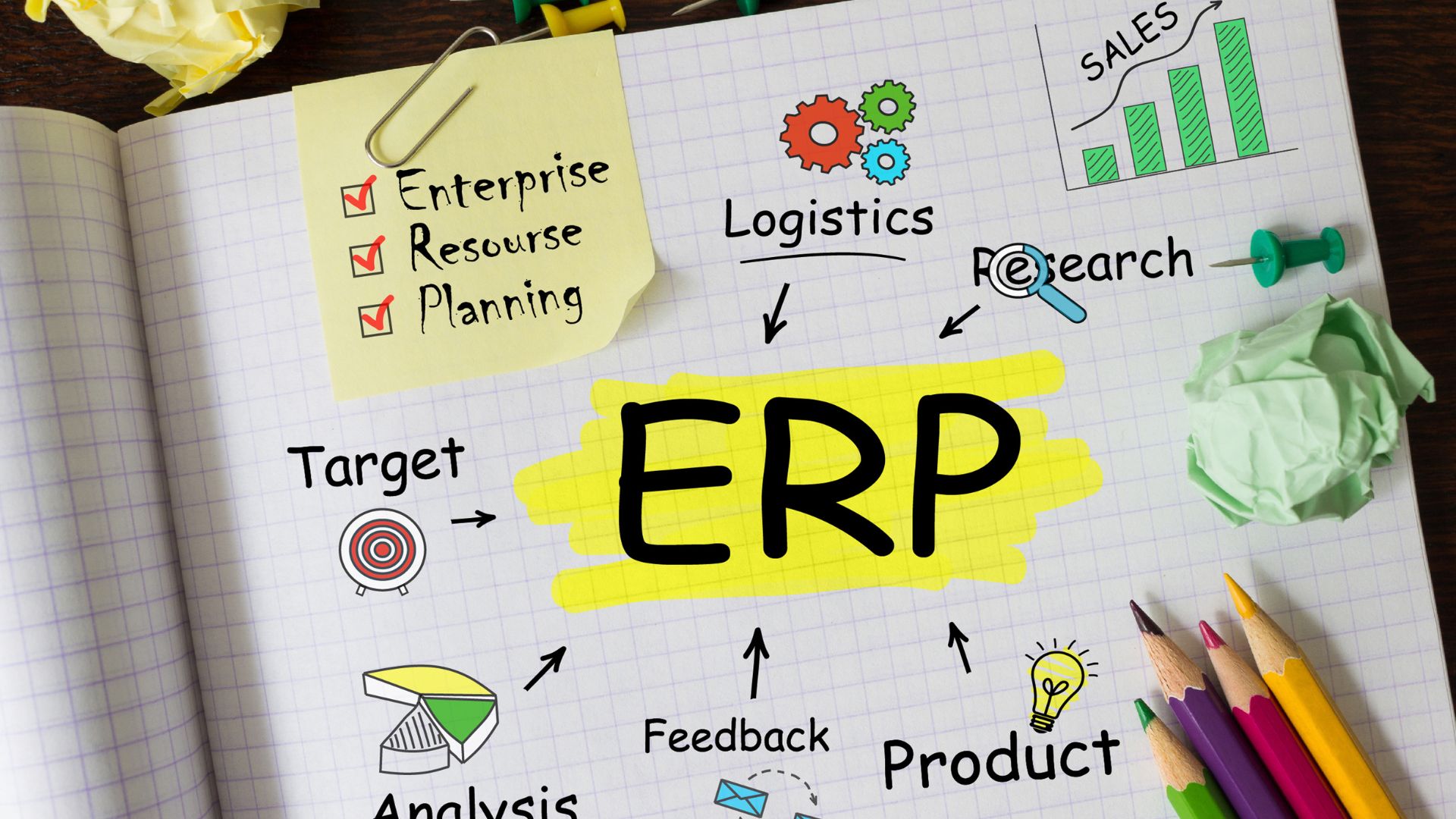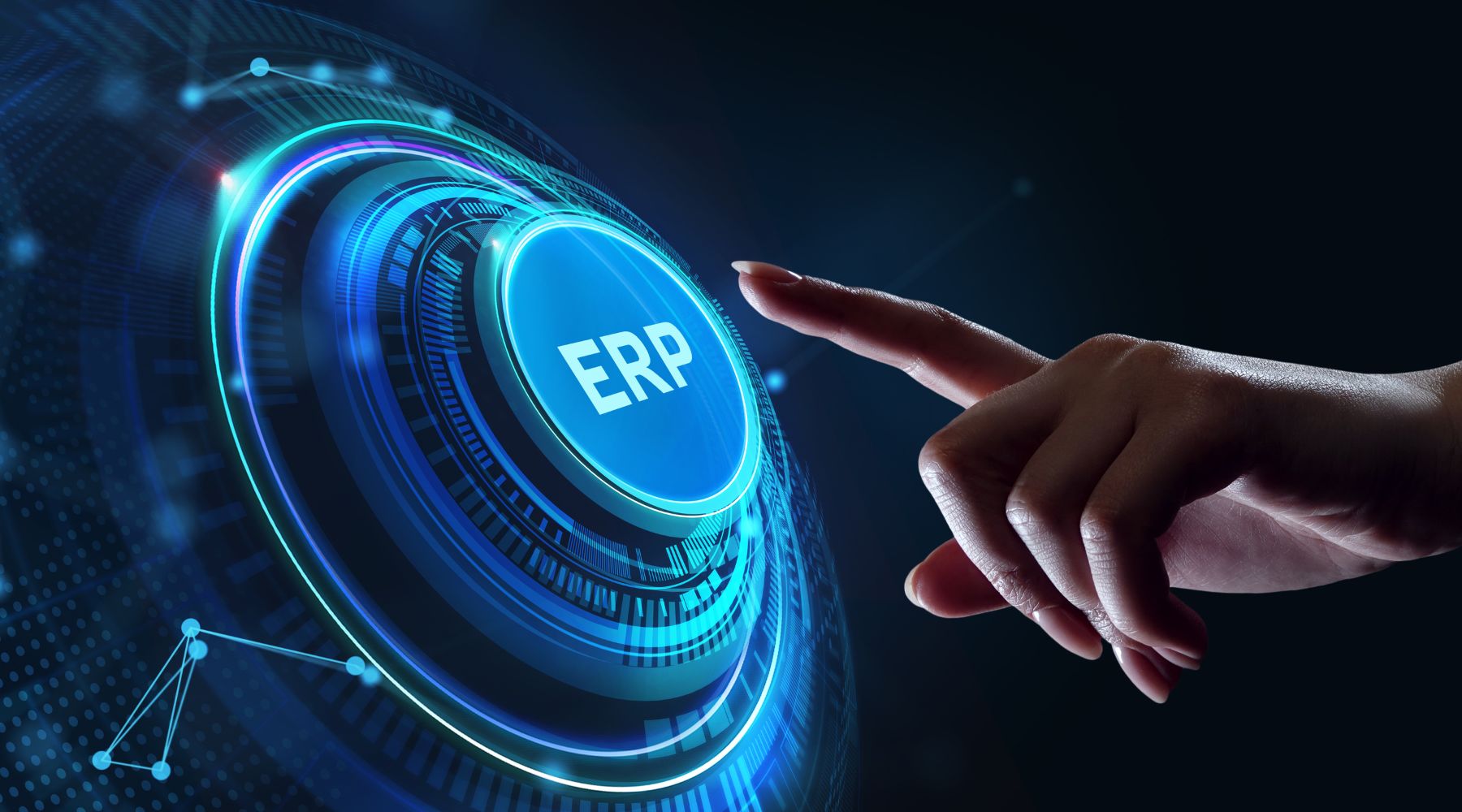Deploying ERP software helps businesses optimize operations, but cost is a factor that makes many business owners hesitate. So ERP implementation costs How much does it usually cost and what does it include? This article will help you understand the elements that make up ERP costs and reveal ways to implement it economically but effectively, in line with your business budget.
1. What is an ERP system and why is it important?
1.1. Definition and objectives of ERP
Enterprise Resource Planning (ERP) is an integrated software that helps businesses comprehensively manage core processes such as accounting, finance, sales, inventory management, human resources and supply chain. ERP operates in real time, providing a centralized, accurate and consistent source of data.
The main goal of an ERP system is to automate and consolidate internal operations, reduce manual errors, eliminate redundant data, and increase connectivity between departments. This is an important foundation to help businesses operate efficiently and better control operating costs - including ERP implementation costs.

1.2. Why should businesses invest in ERP?
ERP implementation is not only a trend, but also a strategic step to improve competitiveness. Here are the reasons why businesses should consider investing:
- Increase productivity and operational efficiency: ERP helps eliminate repetitive operations, synchronize processes and save work processing time.
- Support quick decision making: Reporting and analysis from ERP provide a comprehensive view, thereby supporting managers to make accurate decisions, based on real data.
- Cost optimization: Process integration helps businesses easily control budgets, reduce operating, personnel and inventory costs – especially important when considering ERP implementation costs initial.
- Enhance customer experience: When internal operations are efficient, businesses can serve customers faster, more accurately, and create a professional experience.
- Ready to expand: Modern ERP can flexibly adapt as the business grows, both in size, business area and number of users.
2. What are the costs of ERP implementation?
The cost of implementing an ERP is a long-term investment, including many items from software licensing to maintenance, integration and change management. Understanding each component will help businesses budget effectively, avoiding unforeseen costs.
2.1. Software license costs
This is the cost of purchasing the right to use the software from the ERP vendor. The fee can vary depending on the number of users or the number of functional modules, with two main forms:
- Perpetual License: Pay once, use forever, annual maintenance fees may apply.
- Periodic registration license: Pay monthly/yearly, usually includes updates, support and maintenance.
2.2. Implementation costs and consulting services
Includes installation, system configuration, and business consulting. Experts will analyze business processes, create technical documentation, and provide project management support. This is often the largest item, accounting for 2 to 5 times the licensing cost in complex projects.
2.3. Customization and development costs
When a business needs to adjust ERP to suit its own processes, there will be programming costs, adding new features or changing the interface. This is an expensive item if it involves deep intervention in the source code or has specific technical requirements.
2.4. Hardware and infrastructure costs (for On-premise)
Applicable when businesses choose to deploy ERP on-premises. Including costs for investing in servers, storage devices, internal networks, UPS, etc. If using Cloud ERP, this part is often included in the service fee and is undertaken by the supplier.
2.5. User training costs
Training helps employees use the system effectively, minimizing operating errors. Costs can be included in the service package or calculated separately, depending on the level of training (basic or advanced).
2.6. Post-implementation maintenance and support costs
Includes software updates, bug fixes, feature upgrades, and technical support. Businesses typically spend about $10–20% on software costs each year for this category to ensure long-term system stability.
2.7. Cost of integration with other systems
Connecting ERP to other software such as CRM, SCM or accounting can be time-consuming and labor-intensive. Depending on the level of compatibility and the number of linked systems, this cost varies significantly.
2.8. Other hidden costs
Businesses also need to prepare budgets for difficult-to-quantify expenses such as:
- Organizational change management: Internal communication, encouraging employees to adapt to the new system.
- Data Migration: Clean and transfer data from old system.
- Interruption of operations: Loss of productivity during implementation.
- Legal and compliance costs: Comply with security and accounting regulations.
- Internal management costs: Business personnel participating in implementation is also a significant resource.

3. Factors affecting the total cost of ERP implementation
The cost of ERP implementation is not a fixed number but depends on many factors inside and outside the business. Understanding these factors helps businesses proactively plan their budget and choose the right solution for their operating model.
3.1. Size and complexity of the business
The larger the business and the more complex the processes, the higher the cost of ERP implementation. Companies with many branches and departments often need deeper system integration, leading to significantly increased costs. On the contrary, small businesses can choose a lightweight solution that fits their limited budget.
3.2. Number of users
The number of users directly affects licensing costs and infrastructure investments. The more users, the higher the licensing costs and technical support requirements. In addition, different roles and access levels between user groups can also incur additional costs.
3.3. Level of system customization
The more customized an ERP system is to internal processes, the higher the implementation cost. Additional programming, functional modifications, or integration with other software often lengthens the project timeline and increases maintenance costs later.
3.4. Deployment method: On-premise, Cloud or Hybrid
Choosing an ERP implementation method directly affects the cost structure and long-term operational capabilities of the business.
- ERP On-premise: Requires hardware investment, high initial cost but good control over data.
- ERP Cloud: Pay monthly or yearly, easy to scale but long term costs can increase with number of users.
- ERP Hybrid: Combining both models, suitable for businesses with separate needs but need to manage two systems in parallel, leading to higher deployment and operating costs.
3.5. Number of modules/subsystems
ERP systems are often divided into multiple modules (accounting, sales, human resources, warehouse, manufacturing, etc.). Each additional module means increased costs. Advanced subsystems such as production management and data analysis often require complex implementation and higher costs.
3.6. Industry-specific requirements
Each industry has its own operating characteristics, requiring an ERP system that integrates specialized features. For example, manufacturing enterprises need a production line management module, while service enterprises prioritize contract and customer management. This specificity causes the ERP investment level to vary significantly between industries.
3.7. Project implementation and management time
An ERP project can last from several months to several years. The longer the time, the higher the cost due to the additional resources (internal staff, implementation unit, user training). Lack of specific planning or constant changes during the implementation process also significantly increase the cost.

4. Estimate ERP implementation costs according to business size and market
The cost of implementing ERP is not fixed but varies depending on the size of the business, the number of users, the level of system customization and the solution provider. Below are common estimates according to size and market characteristics, helping businesses have a more realistic view when planning their investment.
4.1. General estimated cost level
According to global surveys, The average cost of ERP implementation is around $9,000 per user over 5 years.For medium-sized businesses, total investment usually falls around 150,000 – 750,000 USD. Large corporations or companies with many branches may have to spend up to several million dollars per year to implement, maintain and upgrade ERP systems.
In Vietnam, this figure is adjusted according to the cost level and software localization level. Specifically, Businesses may have to invest from 200 million to more than 45 billion VND., depending on the choice of international or domestic solution.
4.2. Costs for small and medium enterprises
Small and medium-sized enterprises (SMEs) often prioritize ERP solutions that are cost-effective, easy to implement, and easy to use. Typical investment levels include:
- Small Business: Deploying basic ERP software (off-the-shelf) can range from 5,000 – 50,000 USD. With the SaaS model, subscription fees typically range from 100,000 – 300,000 VND/user/month, depending on vendor and feature range.
- Small and medium enterprises (scale from 10 - 100 employees): Total cost of ERP implementation can range from 18,000 – 200,000 USD/year, depending on the number of users, scope of application and level of customization.
- Vietnam Market:
- Small Business (revenue from 50 - 100 billion VND/year): Common ERP investment level from 500 million - 2 billion VND.
- Medium Enterprise (revenue from 200 - 300 billion VND/year): Investment level is usually from 2 – 6 billion VND.
Domestic ERP solutions are the optimal choice for many small and medium-sized enterprises in Vietnam thanks to competitive costs, friendly Vietnamese interface and flexible deployment support capabilities.
4.3. Costs for large and super large enterprises
With a larger workforce and more complex business volume, large enterprises require ERP systems that are deeply personalized, integrate multiple modules, and have flexible scalability. This leads to significantly higher investment costs:
- Medium – large enterprises: Estimate 500,000 – 2,000,000 USD, especially if it is necessary to integrate many satellite systems such as CRM, HRM, SCM,…
- Large corporation (>1,000 employees): May have to pay from 1 – 5 million USD or more, depending on the level of customization and security requirements, data synchronization.
- In VietnamEnterprises with revenue of over 500 billion VND/year often spend their budget from 5 – 25 billion VND to implement ERP.
- Special, Domestic digital transformation solutions developed by Vietnamese enterprises can help save up to 90% cost Compared with international ERP software, it still meets operational needs and complies with Vietnamese accounting regulations.
5. Frequently Asked Questions
5.1. ERP system is too expensive?
The initial cost of implementing ERP can be high, but it is a strategic investment that will help businesses save on operating costs, reduce errors, and increase long-term performance. It is important to evaluate the return on investment (ROI) rather than just looking at the initial cost.
5.2. Are all ERP systems priced similarly?
No. There are a wide range of options available in the market today, from industry-specific ERP software to custom solutions. Prices can vary widely depending on the size of your business, number of users, integration features, and vendor.
5.3. Is the cost only for the initial purchase?
The cost of implementing ERP is not just limited to the initial payment. Businesses need to consider maintenance, upgrades, employee training, and recurring subscription fees if they choose the cloud model. Calculating the total cost of ownership (TCO) is a step that cannot be skipped.
5.4. Is the expensive solution better?
Higher prices do not always mean higher quality. Some low-cost systems are flexible, easy to deploy, and can be expanded with many modules. Conversely, expensive software can sometimes be less flexible and incur additional customization costs.
5.5. Is the ERP price fixed and non-negotiable?
Many ERP vendors, especially those implementing in Vietnam, are willing to negotiate costs based on actual needs. Businesses can completely negotiate to have a suitable implementation package within their budget, or receive additional support services.
6. How to optimize costs and increase the effectiveness of ERP implementation
ERP implementation often comes with a significant investment, requiring businesses to have a clear strategy to optimize costs while still ensuring efficiency. Below are some ways to help businesses reduce ERP implementation costs without affecting the quality and operability of the system.
6.1. Clearly define needs and prioritize core features
Businesses should start by identifying the core features they really need, rather than implementing the entire system from scratch. Opting for a phased implementation — starting with key modules like accounting, inventory, and sales — helps keep budgets in check and reduces risk. It also avoids incurring costs from unnecessary customizations.
6.2. Select appropriate deployment methods and solutions
Cloud-based ERP solutions (SaaS) typically have low initial investment costs, low maintenance costs, and are easy to scale. Businesses should consider their size, industry, and actual needs to choose the right software package — avoid using high-end packages that exceed current needs. Prioritize standard off-the-shelf solutions instead of custom development to ensure stability and reasonable implementation costs.
>> Contact Bizzi to get advice on the most suitable, economical and effective solution.
6.3. Optimize integration and leverage internal resources
The cost of ERP implementation will increase if the system integrates too many unnecessary external software. Therefore, it is necessary to integrate only really important systems and ensure high compatibility. At the same time, businesses should invest in internal staff training and build a clear change management strategy to help employees adapt quickly, minimize operational errors and costs incurred after implementation.
6.4. Evaluation and negotiation with suppliers
Before signing a contract, businesses should carefully evaluate ERP vendors for features, support levels, pricing models, and flexibility. Negotiate terms such as per-user licensing, maintenance fees, scalability, and technical support — this gives businesses more control. ERP implementation costs both short term and long term.
7. Conclusion
ERP Implementation Cost is a significant and complex investment, influenced by many factors such as business size, level of customization, number of modules, deployment method, and industry specificity. Businesses need to comprehensively evaluate both formal and hidden costs to plan their budget effectively and avoid risks arising during the implementation process.
To optimize costs and ensure investment efficiency, it is essential to clearly identify actual needs, prioritize core features, choose the right solution and proactively negotiate with suppliers. In addition, businesses can consider applying financial automation platforms such as Bizzi - a solution that can flexibly integrate with the current ERP system, helping to streamline financial processes, optimize cash flow without requiring large costs for complex customizations.
To improve the efficiency of invoice management as well as automate the financial and accounting processes of the business. Register to experience Bizzi's comprehensive solution suite today!
- Link to register for a trial of Bizzi products: https://bizzi.vn/dang-ky-dung-thu/
Schedule a demo: https://bizzi.vn/dat-lich-demo/


